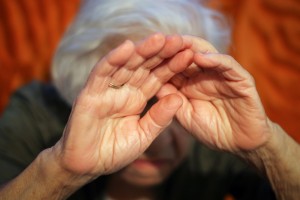5 million elders are abused every single year

Unfortunately, there are several different ways in which elders may be abused, beyond just the physical. In order to protect our loved ones and hold those responsible for these inappropriate actions accountable, it is important we go over the various types of abuse and the specific warning signs to look for. When any form of mistreatment that results in harm or loss to an elderly person occurs, it is considered abuse. If your loved one has been neglected or abused by a caretaker or other individual, please contact the nursing home abuse lawyers at Wormington & Bollinger today.
We are now going to look at the various types of abuse as well as the warning signs that should raise a red flag:
- Physical Abuse – Perhaps the most well-known form of abuse, physical abuse occurs when someone intentionally causes injury, pain, or impairment to another person. The inappropriate use of restraints, unexplained broken bones, burns, bruises, and sores are all examples of this type of abuse.
Some of the warning signs of physical abuse include:
- Unexplained injuries
- Not taking medication regularly
- Broken glasses
- Rope marks on wrists or other signs of being restrained
- Welts, cuts, lacerations, sores, or other marks
- Sexual Abuse – This type of abuse is present when any non-consensual sexual contact takes place. Examples include touching, fondling, and sexual activity that all parties have not consented to.
Warning signs of sexual abuse include:
- Bruises or other marks around the breasts or genitals
- Unexplained vaginal or anal bleeding
- Torn, stained, or bloody clothing
- Emotional Abuse – Verbal abuse, threatening behavior, harassment, intimidation, and humiliation are all examples of emotional abuse.
The warning signs of emotional abuse include:
- Threatening, belittling, or controlling behavior
- Unexplained withdrawal form regular activities
- Caregiver does not allow you to see your elderly loved one without them being present
- Financial Abuse – Financial abuse takes place when someone exploits an elderly person’s assets. This may include manipulating their bank accounts, real estate property, and other assets, or pressuring the senior to sign financial documents they do not fully understand.
Signs of financial abuse include:
- Family or friends who were once distant that now are very involved in the elderly person’s life
- Suspicious signatures on accounts
- New names added to bank accounts and property titles
- Sudden change in the elderly person’s financial situation
- Irregular spending or withdrawals
- Neglect – When someone who is tasked with your elderly loved one’s care fails to provide the basic necessities, such as food, clothing, shelter, medical care, medication, assistance, or a safe environment, it is considered neglect.
Some of the top warning signs of neglect include:
- Malnutrition or dehydration
- Bed sores or other untreated physical problems
- Unsanitary or unsafe living conditions
- Not being bathed
Learning how to prevent elder abuse is the first step to ensuring our loved ones are properly cared for as they get older. If you suspect your loved one is the victim of elder abuse, please contact Wormington & Bollinger today. Our experienced McKinney nursing home abuse lawyers are here to answer any questions you may have and help you understand your rights.

